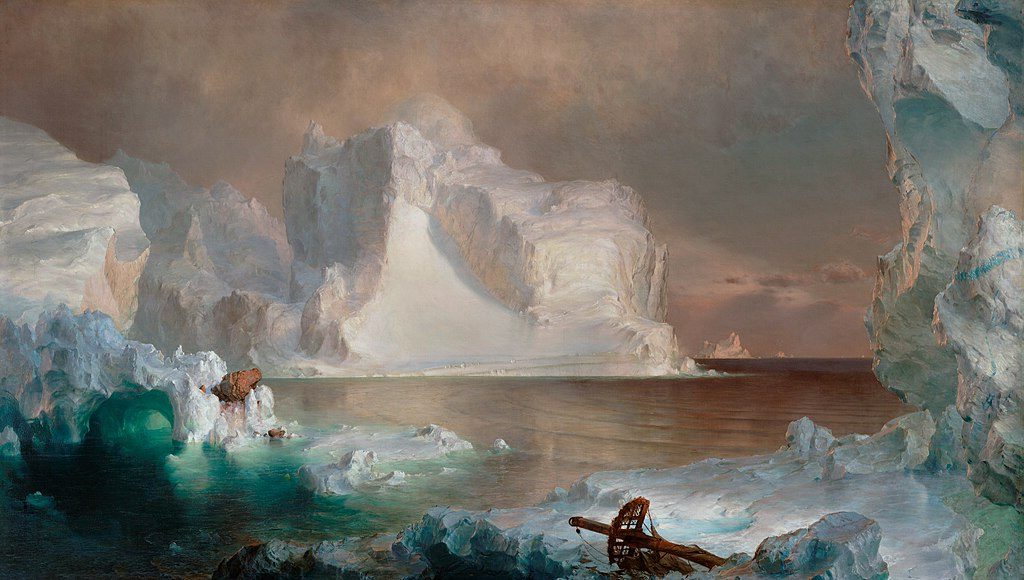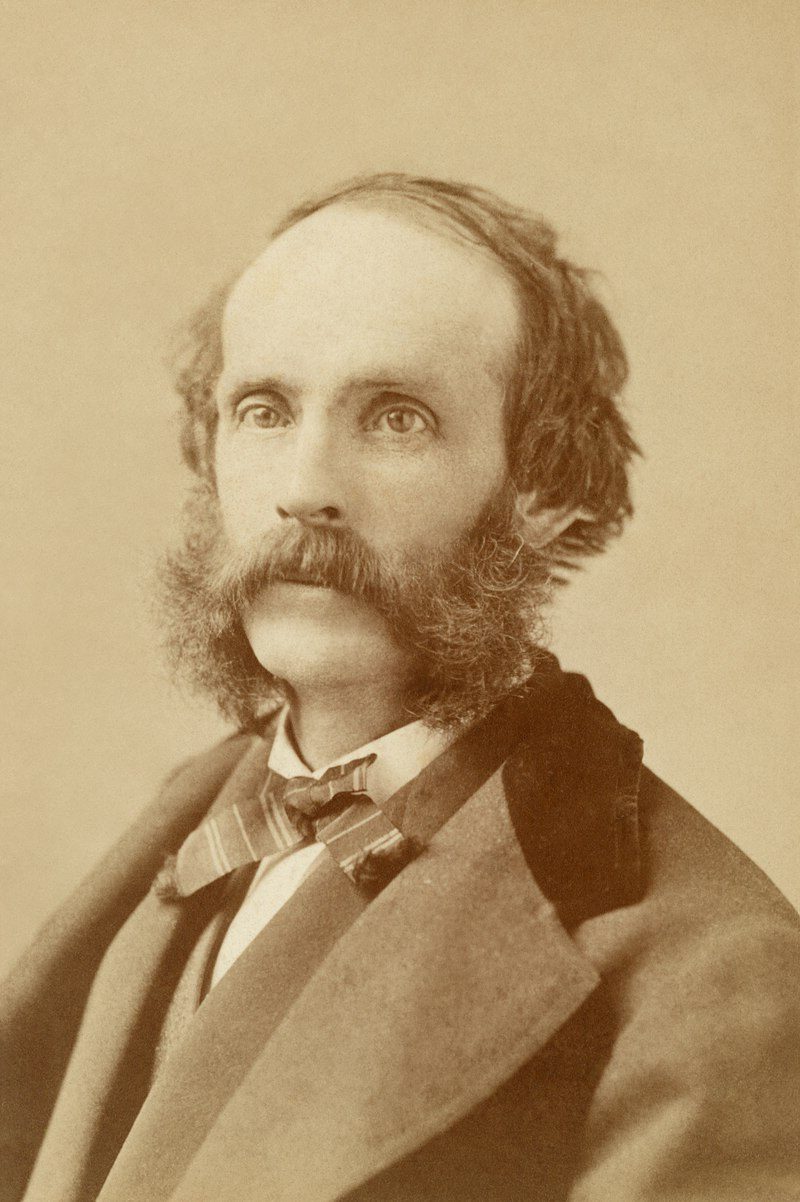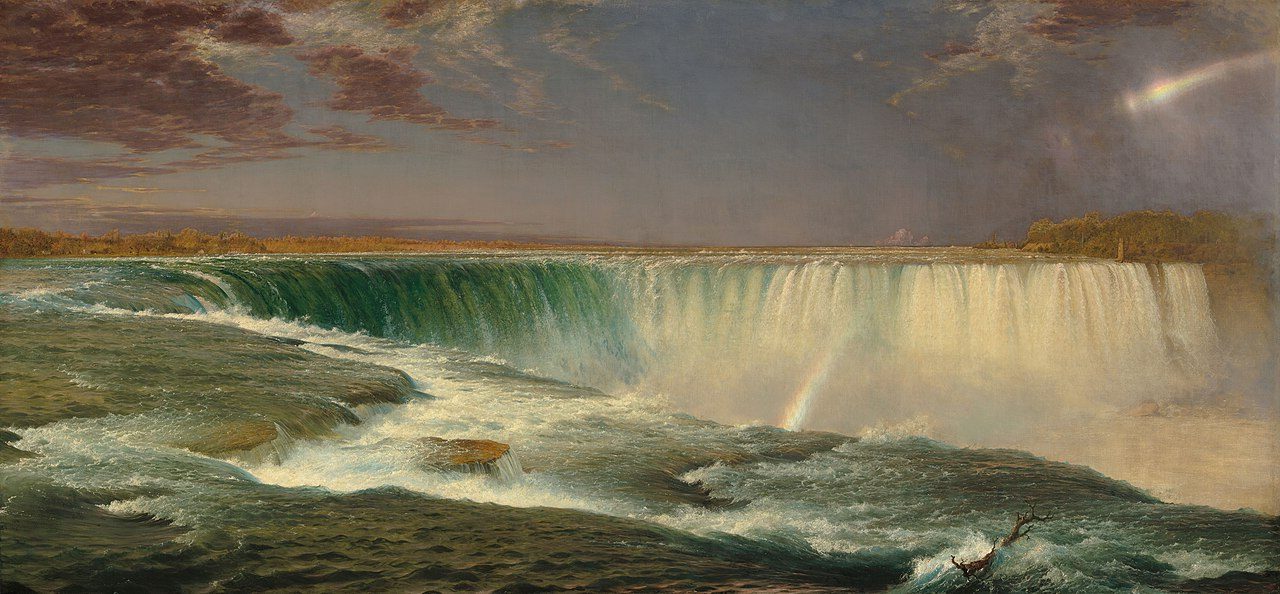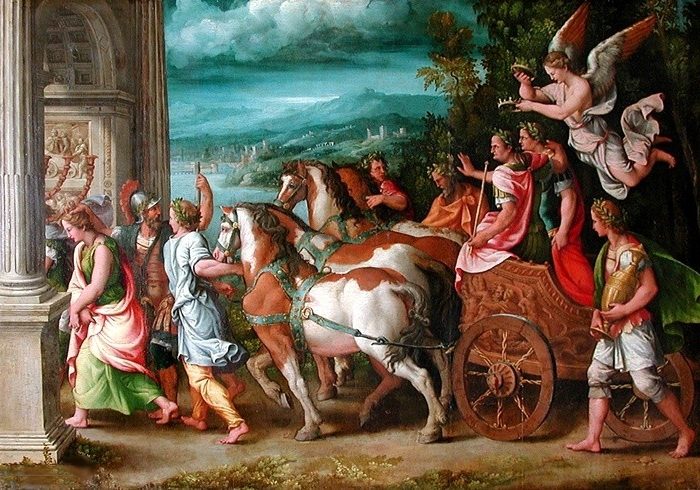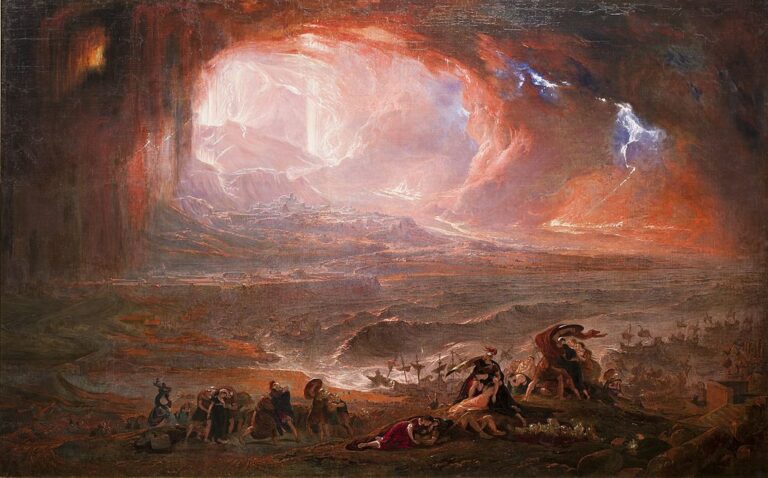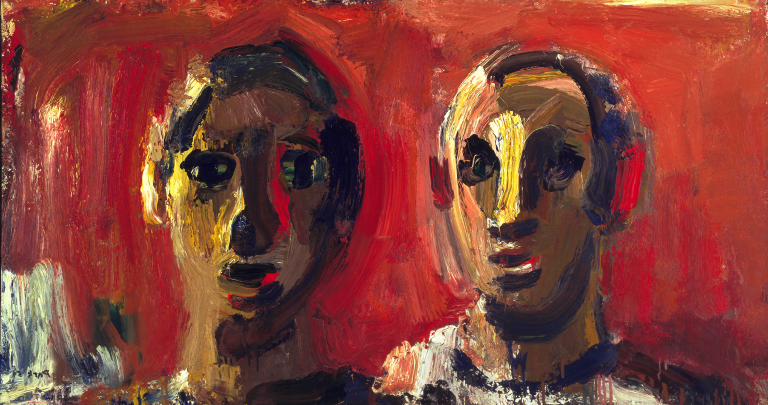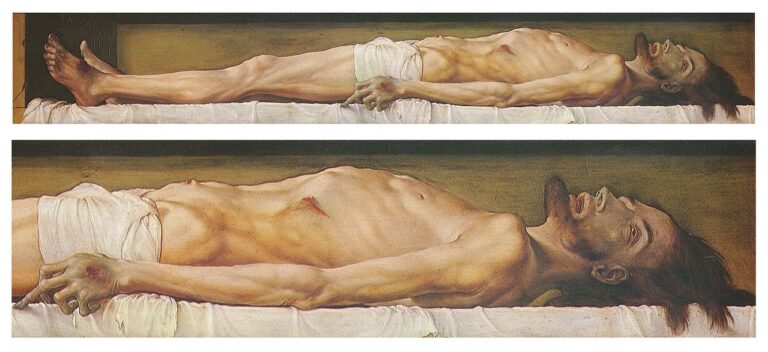Frederic Edwin Church Painter: The Luminous Landscapes of America’s 19th Century Master
Born: May 4, 1826, Hartford, Connecticut, U.S.
Death: April 7, 1900, New York City, U.S.
Art Movement: Hudson River School
Nationality: American
Influenced By: Alexander von Humboldt and John Ruskin
Teacher: Thomas Cole
Frederic Edwin Church Painter: The Luminous Landscapes of America’s 19th Century Master
Life and Career of Frederic Edwin Church
Frederic Edwin Church (1826-1900) rose to become one of America’s most celebrated landscape painters of the 19th century. His journey from apprentice to master artist spanned decades of artistic evolution, extensive travels, and the creation of breathtaking landscapes that captured the sublime beauty of nature.
Early Life and Mentorship Under Thomas Cole
Frederic Edwin Church was born on May 4, 1826, in Hartford, Connecticut, into a wealthy family. His father, Joseph Church, was a silversmith and businessman who provided financial support for his son’s artistic pursuits.
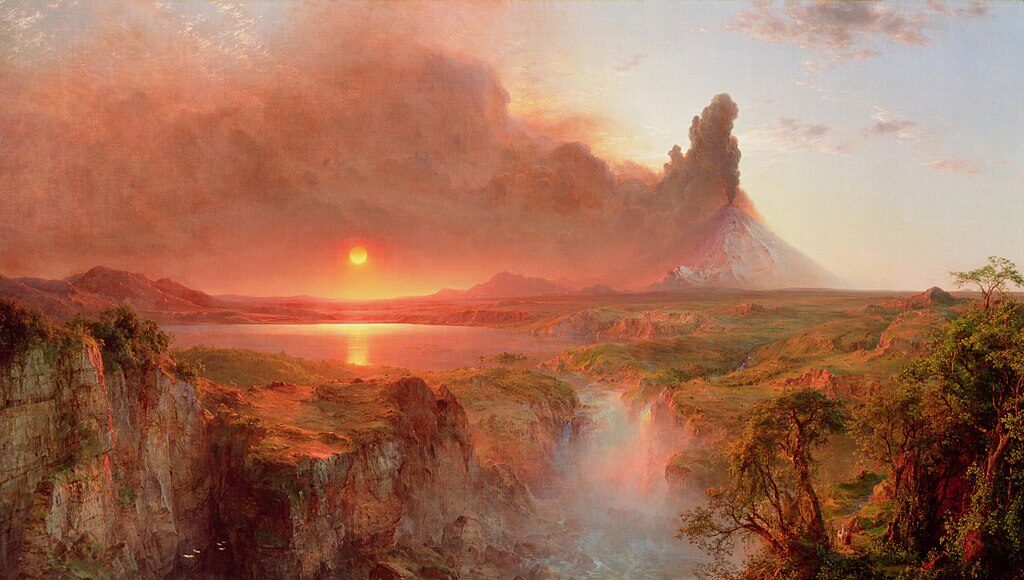
Cotopaxi, 1862, by Frederic Edwin Church
At age 18, Church became the only pupil of Thomas Cole, founder of the Hudson River School. This apprenticeship lasted from 1844 to 1846 and profoundly shaped Church’s artistic development.
Cole taught Church to observe nature directly and capture its spiritual significance. Under Cole’s guidance, Church learned to combine precise detail with emotional resonance in his landscapes.
By 1849, Church was elected as the youngest Associate of the National Academy of Design, signaling his early promise in the American art scene.
Evolution Through the Hudson River School
Church quickly established himself as a leading figure in the Hudson River School, America’s first native art movement. His early work reflected the School’s emphasis on romantic, detailed American landscapes.
His painting techniques evolved to include incredibly precise details and luminous effects.
Church often spent months perfecting single works, using thin layers of paint to achieve remarkable luminosity.
Unlike some contemporaries, Church traveled extensively to find new subjects. His first major expedition to South America in 1853 marked a turning point in his career.
The paintings from his South American journeys, particularly those depicting the Andes of Ecuador, brought him national fame. “The Heart of the Andes” (1859) became a sensation when exhibited, with people paying admission just to view this single painting.
Artistic Maturity and Travels Abroad
By the 1860s, Church had reached the height of his popularity and artistic maturity. His grand-scale paintings became cultural events when exhibited, drawing thousands of viewers.

Aurora Borealis, 1865, by Frederic Edwin Church
Church traveled to the Middle East in 1867-1868, visiting Jerusalem, Petra, and other significant sites. These journeys inspired works like “Jerusalem from the Mount of Olives” (1870) that captured exotic landscapes with scientific accuracy.
His paintings commanded some of the highest prices of any American artist of the time. The success allowed him to purchase 126 acres in Hudson, New York, where he began designing his Persian-inspired home, Olana.
Church’s technique became increasingly sophisticated, particularly in his use of light. He meticulously researched atmospheric effects and natural phenomena to create scientifically accurate yet emotionally powerful scenes.
Final Years and Legacy
In the 1870s, Church developed rheumatoid arthritis that gradually limited his ability to paint. He focused increasingly on designing and building Olana, which became his masterpiece in architecture and landscape design.
Despite physical limitations, Church continued creating smaller works and advising younger artists. His home became a cultural gathering place for artists and intellectuals.
Church died on April 7, 1900, leaving behind a transformative legacy in American art. Olana survives today as a state historic site that preserves his creative vision.
His influence extends beyond his paintings to his role in elevating American landscape art to international prominence. Church’s work bridges scientific observation and spiritual wonder, capturing the natural world in ways that continue to inspire viewers today.
Artistic Themes and Techniques
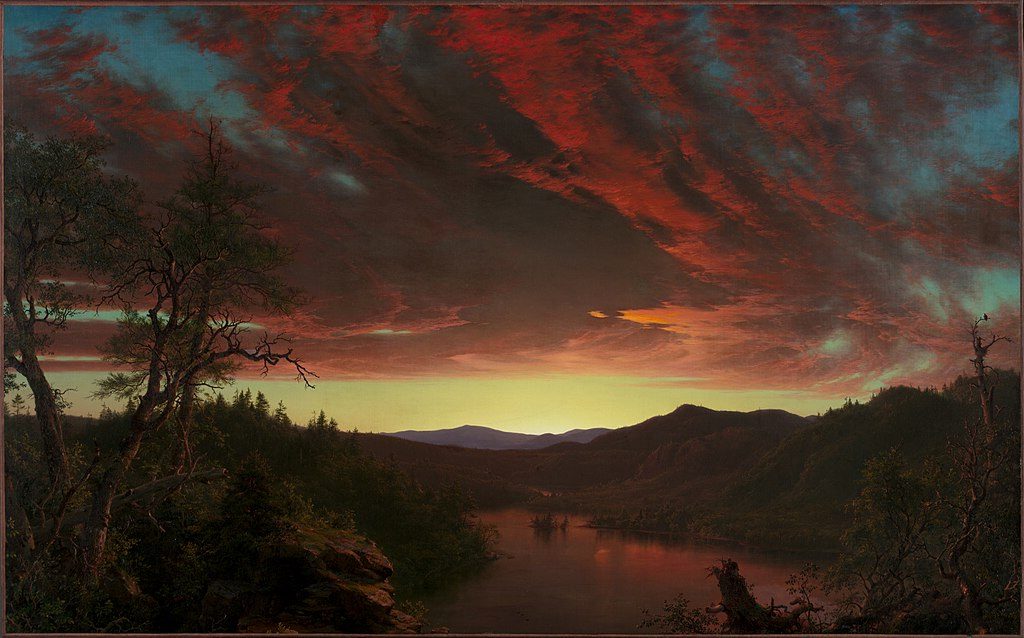
Twilight in the Wilderness, 1860, by Frederic Edwin Church
Frederic Edwin Church mastered the art of capturing nature’s drama and beauty through distinctive painting techniques. His works showcased remarkable attention to detail and a profound understanding of natural light.
Depiction of Light and Natural Phenomena
Church’s paintings are celebrated for their extraordinary portrayal of light. He captured sunsets with brilliant oranges and reds that seemed to glow from within the canvas. This luminous quality placed him among the key figures of the Luminism movement in American art.
His depiction of atmospheric phenomena was remarkably accurate. In works featuring volcanoes like “Cotopaxi” (1862), Church painted smoke and ash clouds with scientific precision while maintaining aesthetic beauty.
The artist often positioned light sources strategically to create dramatic effects. Sunlight breaking through clouds or reflecting off water surfaces became a signature element in his landscapes.
Through careful layering of translucent colors, he achieved a realistic sense of depth and distance in sky scenes.
Romanticism and the Sublime in Nature
Church embraced Romanticism by emphasizing nature’s emotional impact on viewers. His massive canvases of mountains, icebergs, and South American landscapes evoked feelings of awe and wonder.
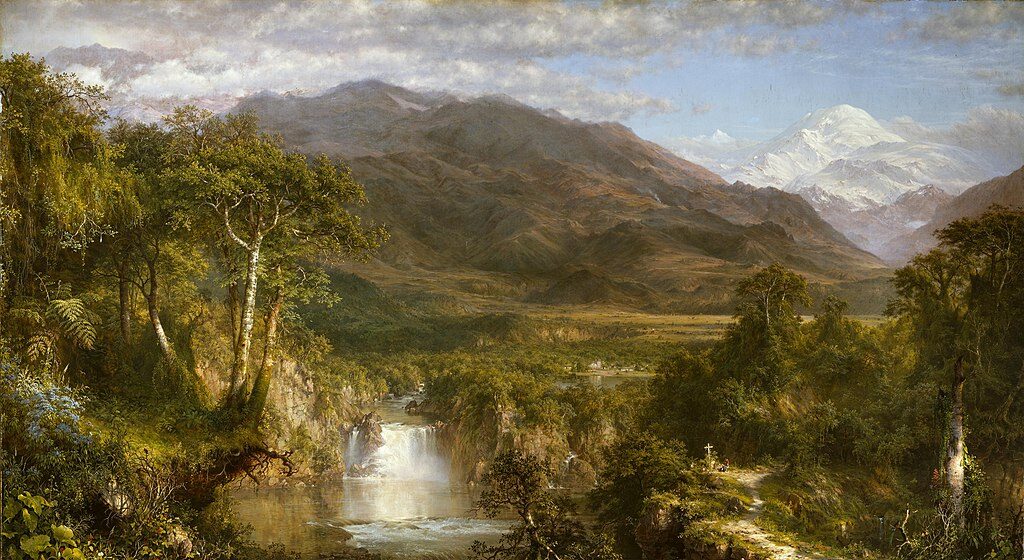
The Heart of the Andes, 1859, by Frederic Edwin Church
The concept of the sublime—nature’s overwhelming power and grandeur—is evident throughout Church’s work. His painting “The Heart of the Andes” (1859) presented viewers with an immersive panorama of mountains, waterfalls, and lush vegetation that transported them to distant lands.
Church often included tiny human figures in his vast landscapes to emphasize nature’s imposing scale. This technique reinforced the Romantic idea of human insignificance amid natural splendor.
His South American scenes introduced American audiences to exotic landscapes that seemed almost supernatural in their beauty and drama.
Technique: From Sketch to Oil on Canvas
Church’s artistic process was methodical and precise. He began with detailed field sketches during his extensive travels through North and South America. These preliminary drawings captured essential details of landscapes and natural features.
Back in his studio, Church developed oil sketches to work out color schemes and compositions.
He used a layering technique, building from thin washes to thicker applications of paint to achieve remarkable depth.
His technical mastery allowed him to render microscopic details—individual leaves, rock textures, and water ripples—without losing the cohesive feel of the whole scene.
Church often used a limited palette but achieved remarkable color variation through skillful mixing.
The final canvases were typically large-scale works intended for dramatic public display. Church sometimes spent months or even years perfecting a single painting, adding intricate details that rewarded close inspection.
Notable Works and Exhibitions

Morning in the Tropics, ca. 1858, by Frederic Edwin Church
Frederic Edwin Church created numerous masterpieces throughout his successful career, gaining recognition through prestigious exhibitions and leaving a lasting legacy in American art. His detailed landscapes captured dramatic natural scenes with remarkable accuracy and emotional resonance.
Major Landmark Exhibitions
Church made his debut at the National Academy of Design’s annual exhibition in New York in 1845, where he continued to showcase his work throughout his career. His paintings regularly attracted large crowds, with some exhibitions charging admission simply to view a single masterpiece.
The Metropolitan Museum of Art and Wadsworth Athenaeum have hosted significant retrospectives of Church’s work. These exhibitions highlighted his technical brilliance and breadth of subject matter from American wilderness to exotic landscapes.
Church’s paintings were often displayed as spectacular events rather than typical gallery showings. His work “The Heart of the Andes” toured major cities, drawing thousands of viewers who paid to see this single magnificent canvas.
Selected Masterpieces by Church
“Niagara” (1857) stands as one of Church’s most iconic works, capturing the power and majesty of the famous falls with stunning precision. The painting established his reputation as America’s premier landscape artist.
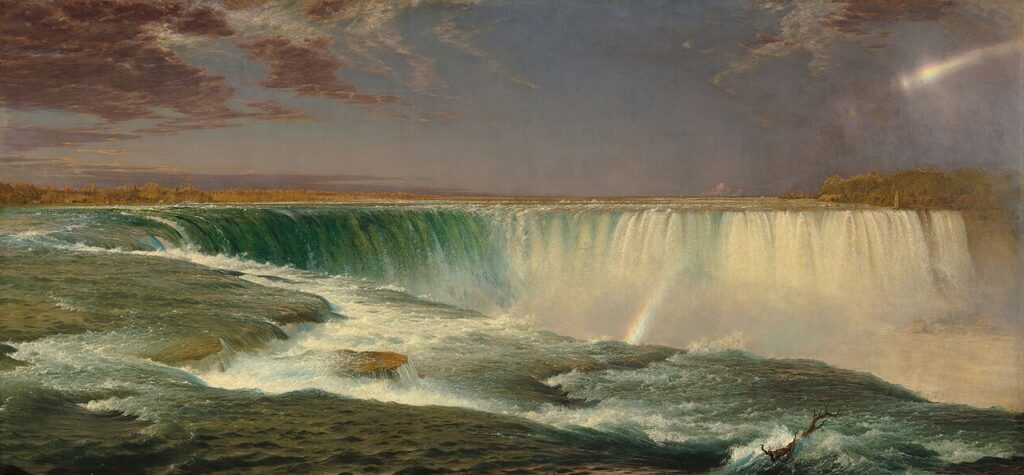
Niagara, 1857, by Frederic Edwin Church
“The Heart of the Andes” (1859) represents Church’s ambitious vision, combining scientific observation with romantic sensibility in a panoramic view inspired by his travels and Alexander von Humboldt’s writings.
“The Icebergs” (1861) showcases Church’s ability to render light on ice with remarkable accuracy.
Other notable masterpieces include “Twilight in the Wilderness” (1860), depicting a fiery sunset over Maine wilderness, and “Our Banner in the Sky” (1861), an allegorical representation supporting the Union during the Civil War.
“Morning in the Tropics” (1877) demonstrates Church’s interest in exotic locations and atmospheric effects, revealing his technical mastery of light and atmosphere.
Church’s Influence and Reception
Church dominated American landscape painting during the mid-19th century, earning both critical acclaim and commercial success. His detailed yet emotionally charged landscapes bridged scientific observation and romantic expression.

Rainy Season in the Tropics, 1866, by Frederic Edwin Church
Church’s work influenced generations of American painters and helped establish a distinctly American artistic identity. His meticulous attention to natural details reflected his belief in the spiritual significance of nature, resonating with American audiences.
Unlike later Impressionism, Church focused on precise details while still conveying emotional impact. His panoramic vistas of the Hudson River and exotic landscapes captured the American imagination and embodied the era’s spirit of exploration and national pride.
His paintings became symbols of American cultural achievement, with critics praising his technical virtuosity and emotional power. Today, Church is recognized as a pivotal figure who elevated American landscape painting to international prominence.
Frequently Asked Questions
Frederic Edwin Church stands as one of the most celebrated American landscape painters of the 19th century. His technical brilliance, global travels, and artistic innovations shaped both his own body of work and American art history.
What are the most notable works of Frederic Edwin Church and where can they be viewed?
Church’s masterpiece “Heart of the Andes” (1859) remains his most famous painting and can be viewed at the Metropolitan Museum of Art in New York City. This monumental work captivated audiences who paid admission to see it displayed alone in a darkened room.
“Niagara” (1857), his dramatic portrayal of the famous falls, hangs in the National Gallery of Art in Washington, D.C. The painting’s immense popularity led to profitable reproductions through chromolithography.
“The Icebergs” (1861) is housed at the Dallas Museum of Art. This spectacular Arctic scene demonstrates Church’s mastery of light and his commitment to scientific observation.
Olana, Church’s Persian-inspired home in Hudson, New York, now serves as a museum containing many of his smaller works and sketches.
How did Frederic Edwin Church’s work influence the Hudson River School movement?
Church studied under Thomas Cole, the founder of the Hudson River School, and eventually became the movement’s most technically accomplished painter. His work elevated the school’s reputation through its unprecedented attention to detail and scientific accuracy.
Church expanded the movement’s focus beyond the northeastern United States to include dramatic landscapes from South America, the Arctic, and the Middle East. This global perspective broadened the scope and ambition of American landscape painting.
His commercial success helped legitimize landscape painting as a respected art form in America. Church’s paintings sold for record prices and attracted international acclaim.
In what ways did Frederic Edwin Church’s travels impact his artistic style and subject matter?
Church’s expeditions to South America in 1853 and 1857 profoundly influenced his work. The tropical landscapes, especially in Ecuador and Colombia, inspired some of his most ambitious paintings like “Heart of the Andes.”
His 1859 trip to Newfoundland and Labrador resulted in spectacular Arctic scenes including “The Icebergs.” These paintings reflected both scientific interest in polar exploration and romantic notions of sublime wilderness.
Church’s Middle Eastern travels in the 1860s led to works like “Jerusalem from the Mount of Olives” (1870). These journeys expanded his palette and introduced new architectural elements to his compositions.
His travels aligned with the era’s scientific explorations, particularly those of naturalist Alexander von Humboldt, whose writings inspired Church to seek out specific locations.
Can you describe the techniques and stylistic features Frederic Edwin Church commonly employed in his paintings?
Church was renowned for his extraordinary attention to detail, often using small brushes to render precise botanical and geological features. He sometimes used a magnifying glass while painting to achieve microscopic accuracy.
His compositions typically featured dramatic vistas with carefully balanced foreground, middle ground, and background elements. Church often included small human figures to emphasize the grand scale of nature.
Church mastered the technique of luminism, creating effects of light that seem to glow from within the canvas. He applied multiple thin layers of paint and glazes to achieve atmospheric depth and luminosity.
Unlike many contemporaries, Church often worked directly on large canvases without preliminary sketches, though he did create detailed oil sketches during his travels.
What was the role of light and naturalism in Frederic Edwin Church’s artworks?
Light serves as both a spiritual and scientific element in Church’s work. His dramatic sunsets and atmospheric effects often convey transcendental themes while demonstrating his understanding of optical phenomena.
Church’s paintings frequently featured specific moments of light—dawn, sunset, or dramatic weather conditions—that transformed ordinary landscapes into spectacular scenes. This approach reflected both romantic sensibilities and scientific observation.
His commitment to naturalism extended to accurate depictions of plant species, geological formations, and atmospheric conditions. Church studied botany, geology, and meteorology to ensure scientific accuracy in his landscapes.
Church often painted outdoors to capture changing light conditions, though he completed his large studio works indoors based on field studies and memory.
How have art historians assessed Frederic Edwin Church’s contribution to American landscape painting?
Art historians regard Church as a pivotal figure. He helped establish a distinctly American artistic identity separate from European traditions. His work embodied American confidence and ambition during a period of national expansion.
During the mid-20th century, Church’s reputation declined. This happened as abstract expressionism dominated American art. However, since the 1970s, scholars have reassessed his work. They recognized his technical brilliance and ecological awareness.
Contemporary historians highlight Church’s fusion of art and science. They see his detailed naturalism as an important precursor to environmental consciousness. His paintings documented ecosystems and natural phenomena with remarkable precision.
Church’s global perspective has earned new appreciation in recent decades. His portrayal of diverse landscapes from multiple continents shows an expansive vision that transcended nationalist painting traditions.

